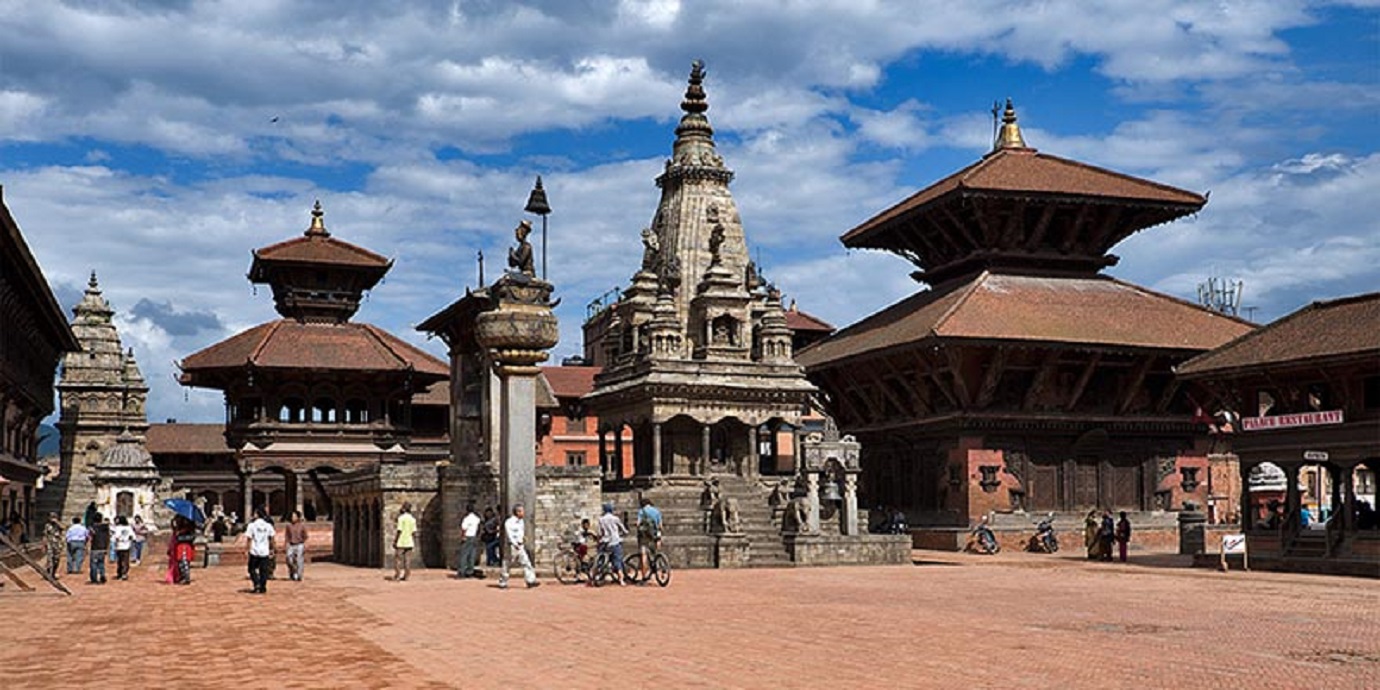Local mythology holds that the name “Ne,” which belonged to a sage who lived in the Nepal Valley, is where the word “Nepal” came from (popularly called the Kathmandu Valley now). The word might alternatively have come from the name of a Nepalese ethnic group known as the Newar. This roughly rectangular, tiny landlocked nation that is currently sandwiched between the two contemporary superpowers of China and India is actually a multi-religious, multi-lingual, multi-racial, and multi-cultural nation with a vast and rich past that stretches back to 11,000 years ago! The three main periods of Nepal’s history are the Ancient, Medieval, and Modern periods.
1. Ancient Nepali history
Our understanding of Nepal’s prehistory is primarily based on the Hindu and Buddhist interpretations of the legendary traditions of the Newar people, a native ethnic group in Nepal who live in the Nepal Valley (now Kathmandu Valley). This community, which is now well-known among tourists for its ethnic jewelry, has contributed significantly to the development of Nepal as a country.
2. Buddhist heritage in Nepal
In Lumbini, a region at the foot of the Himalayas in the Terai plains of southern Nepal that has been a World Heritage site since 1997, the Buddha was born. The early Buddhist impact in Nepal can be seen in a famous column written on a pillar built in Lumbini by the Indian Emperor Ashoka in the third century BCE. Even though there is no proof that Ashoka really traveled there, oral tales claim that he visited the Kathmandu Valley and built four stupas near Patan.
3. The Lichhavis and Kiratis
The Kiratis, the first known kings of Nepal, arrived from the East around the seventh or eighth century BCE, marking the beginning of Nepal’s history as it is currently understood. The Lichhavis, the first governing family with Indian ancestry, ousted the Kiratis at the start of the fourth century CE. The Lichhavis, who built most of Kathmandu’s architecture and culture, presided over a prosperous Nepal throughout this time. The Changu Narayan Temple at Bhaktapur and the Pashupatinath Temple in Kathmandu are two of Nepal’s UNESCO World Heritage Sites and are products of the Lichhavis.
4. The Mythology of Pashupatinath Temple
According to urban mythology, a mound is where this iconic temple got its start. This mound was frequented by a cow, who daily fed it milk. A herder noticed this peculiar routine. He dug there out of curiosity and found a linga with the faces of Shiva engraved into it. This Linga gave forth a dazzling light. Subsequently, a shrine was constructed in honor of Pashupatinath, a Shiva incarnation who guards animals.
5. Ancient Nepal
Mallas and the Golden Age
If the Lichhavis established Nepal’s cultural foundation, the Mallas brought about a period of unparalleled cultural splendor. Over the course of their 550-year reign, they constructed several temples and palaces, supported the arts and humanities, and popularized the spectacular chariot festivities of Indra Jatra and Machhendranath. Also, they unified the entire valley and codified its rules, many of which were heavily influenced by Hindu ideals, such as the caste system. In the fifteenth century, Yaksha Malla partitioned the realm among his three sons, establishing the kingdoms of Bhaktapur, Patan, and Kathmandu (Bhadgaon).
The Festival of Indra Jatra Legend
Folklore and history in Nepal claim that Lord Indra once traveled to Kathmandu while posing as a peasant and picking flowers for his mother. He was discovered while picking flowers, and the people quickly took him into custody. His mother worried about him after his extended absence and traveled to Kathmandu where she discovered him imprisoned with his hands and legs bound. They were very ashamed when they eventually learned the truth about Lord Indra. They thus begged for pardon and began to rejoice over Indra’s coming with lavish feasts, chariot parades, singing, and dancing. Even today, in August or September, Nepal still celebrates this holiday.
Taking the Gorkha Ruler’s Throne
There were also many autonomous principalities in the 15th century. In the 18th century, one of these principalities—Gorkha—became fairly powerful, and its monarch, Prithvi Narayan Shah, issued a challenge to Nepal Valley. In 1769, he ultimately took control of the valley, relocated his capital to Kathmandu, and founded the Shah Dynasty (which governed Nepal until 2008!).
6. Modern Period
Nepal’s extreme linguistic and ethnic variety made it challenging for the Shah monarchs to create a consolidated control. The succession instability brought on by Prithvi Narayan Shah’s passing made matters worse. Shah Rulers became nothing more than symbolic rulers as a result, and in the 19th century, families like the Rana family came to hold the real authority. With the establishment of democratic elections and a constitution, the period that followed saw the process of democracy.
The years that followed were undoubtedly not happy ones because there were massive protests in the shape of the people’s movement, the Maoist rebellion, and an unsuccessful democratic attempt. The 240-year-old monarchy in Nepal was announced to be abolished in 2008 when the country was declared to be a Federal Democratic Republic. Although it continues to struggle with modernisation, Nepal has unquestionably made progress.
Your next visit to Nepal would be much more intriguing and significant if you were familiar with its history. Go back in time now and see those stupas and temples, see the local tribes, stroll along the ancient roads, and get a feel for the intangible past!




